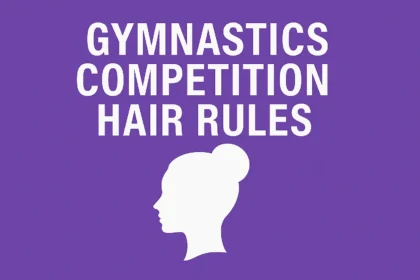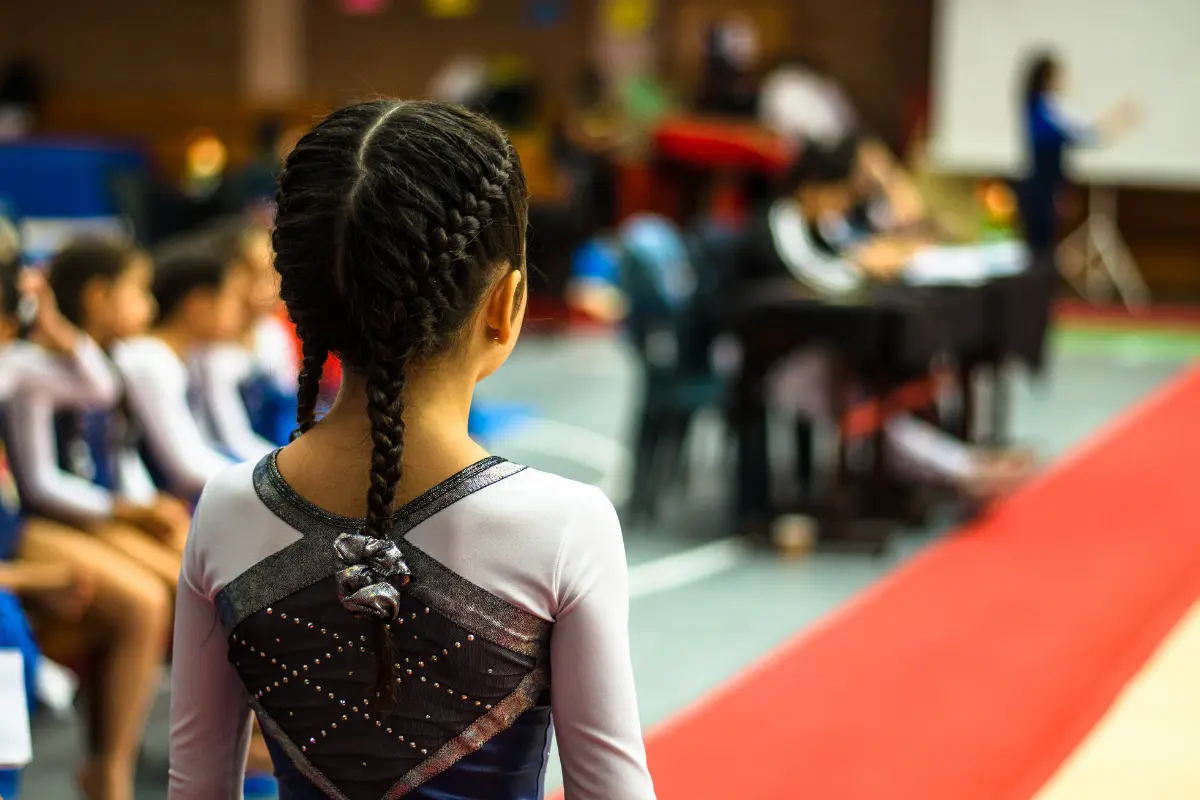In women’s artistic gymnastics (WAG), Olympic competition is centered around a four-rotation format—with one rotation for each apparatus. These rotations follow a fixed sequence known as the Olympic order:
Vault → Uneven Bars → Balance Beam → Floor Exercise
Unlike men’s gymnastics, which includes six apparatuses and thus six rotations, women’s gymnastics consists of four events. As a result, every phase of the women’s competition—qualification, team final, individual all-around final, and each of the apparatus finals—takes place within this four-stop rotation circuit.
What Is a Rotation in Women’s Gymnastics?
A rotation refers to a group’s or team’s movement from one apparatus to the next. Once every gymnast in a group has completed her routine on an event (e.g., vault), the entire group marches to the next event (in this case, uneven bars). That transition marks the beginning of the next rotation.
This carefully timed and orchestrated movement ensures that all competitors perform in a consistent, fair environment—moving through the four events in the same sequence, regardless of their grouping.
How Rotations Work in Each Olympic Phase
Rotations in women’s gymnastics follow a predictable yet strategic rhythm across all phases of Olympic competition. Here’s how they unfold in each stage:
| Phase | Line-Up & Field | Rotations | What Happens |
|---|---|---|---|
| Qualification | 95 gymnasts (12 teams + mixed groups), 5-4-3 format | 4 | Divided into 5 subdivisions; all groups rotate through 4 events in Olympic order—no byes. |
| Team Final | Top 8 teams, 3-up-3-count | 4 | Seeded start: ranks 1–2 start on vault, 3–4 bars, 5–6 beam, 7–8 floor. Final rotation on floor decides medals. |
| Individual All-Around | 24 gymnasts (max 2 per NOC), 4 groups of 6 | 4 | Groups start on different events; top qualifiers typically finish on floor in medal-deciding moment. |
| Apparatus Finals | 8 specialists per event | 1 per final | Each gymnast performs one routine. Vault finalists do two vaults; average score decides result. |
Qualification Round
The qualification round is the first stage of Olympic competition. It includes:
- The 12 teams that qualified for the Games,
- Plus dozens of individual gymnasts competing as part of mixed groups.
Each team follows the 5-4-3 format: five athletes on the roster, four compete per apparatus, and the best three scores count toward the team total. Gymnasts are split into five subdivisions, each rotating through the four apparatuses in Olympic order. There are no byes, meaning every group is active during each rotation.
This round determines:
- The top 8 teams for the team final,
- The top 24 gymnasts for the all-around final,
- And the top 8 on each event for the apparatus finals.
Scores from this phase do not carry over to the finals.
2. Team Final
In the team final, only the top 8 teams compete, and the format shifts to 3-up-3-count: three gymnasts compete on each event, and all three scores count. There’s no margin for error.
Start events are seeded based on qualification results:
- Teams ranked 1–2 start on vault,
- 3–4 on uneven bars,
- 5–6 on beam,
- 7–8 on floor.
Every team rotates through all four apparatuses, completing four rotations total. The structure builds dramatic tension, as higher-seeded teams often end on floor exercise, where crowd energy and powerful routines can decide medals.
3. Individual All-Around Final
This phase determines the most complete gymnast—the athlete who excels across all four apparatuses.
The top 24 gymnasts from qualification (limited to two per country) are divided into four groups of six, with each group starting on a different apparatus. As they rotate through the Olympic order, the top qualifiers finish their final rotation on floor, adding drama to the closing moments of the competition.
There are no dropped scores—every performance counts. The gymnast with the highest cumulative total after four rotations wins all-around gold.
4. Apparatus Finals
Each apparatus final features the top 8 specialists from qualifications on a single event. Unlike the other phases, there is no rotation—gymnasts perform one routine only, and the top score wins.
The only exception is the vault final, where each gymnast performs two different vaults, from different families of techniques. The average score of those two attempts determines the final ranking.
Mechanics of a Rotation
Rotations are more than just walking from one event to the next. They follow strict procedures that ensure fairness and structure:
Clock Is Ticking
Once the green “start” light appears on the scoreboard:
- The first athlete has 30 seconds to salute and mount,
- Or 60 seconds if the apparatus is balance beam.
After the final routine is completed, the entire squad has only a few minutes to clear the podium before marshals prepare for the next group.
March-Over Ritual
Once all scores are confirmed by the judges, the gymnasts line up behind their coach. A marshal leads the group to the next apparatus, marching in standard Olympic order. It’s a moment of transition, reflection, and mental reset.
Strategic Ripple
Rotation order can influence the tone of the entire competition:
- Starting on vault offers an energetic launch but may leave gymnasts finishing on the nerve-wracking balance beam.
- Starting on beam flips the mental equation, demanding focus early but ending on floor exercise, where adrenaline and crowd energy can drive big finishes.
Smart rotation draws can help athletes build momentum and finish strong.
Paris 2024 Snapshot: Rotation in Action
The four-rotation structure played out in full force at the Paris 2024 Olympics, offering high-stakes drama and nonstop action from start to finish.
Qualification Day
On July 28, 2024, 95 female gymnasts were divided into five subdivisions for the qualification round.
All four apparatuses were active at once—vault, bars, beam, and floor—with no byes under current FIG rules. This allowed each group to complete its four rotations in under two hours, keeping the event fast-paced and intense.
The round determined finalists for the team, all-around, and apparatus events—and set the tone for what would become a memorable Games.
Team Final Drama
In the team final, USA and Italy both began on vault, launching into the competition with power and precision. As the rotations progressed, the momentum built toward the final event—floor exercise.
With gold on the line, Simone Biles delivered a near-perfect routine and stuck her double-layout dismount, securing the team gold for the United States. It was a defining moment of the Games—and a perfect example of how rotation order, stamina, and clutch performance can decide Olympic glory.
Why the Four-Rotation Structure Matters
The four-rotation system in women’s gymnastics is a true test of versatility and consistency.
Each event challenges different aspects of athleticism:
- Vault demands speed and explosive power.
- Uneven Bars call for precision and swing mechanics.
- Balance Beam tests poise under pressure.
- Floor Exercise blends tumbling, artistry, and musical interpretation.
Gymnasts must manage energy, mental focus, and performance quality across four very different skill sets, often within a tight two-hour window. Maintaining excellence across every rotation is what separates champions from the field.













